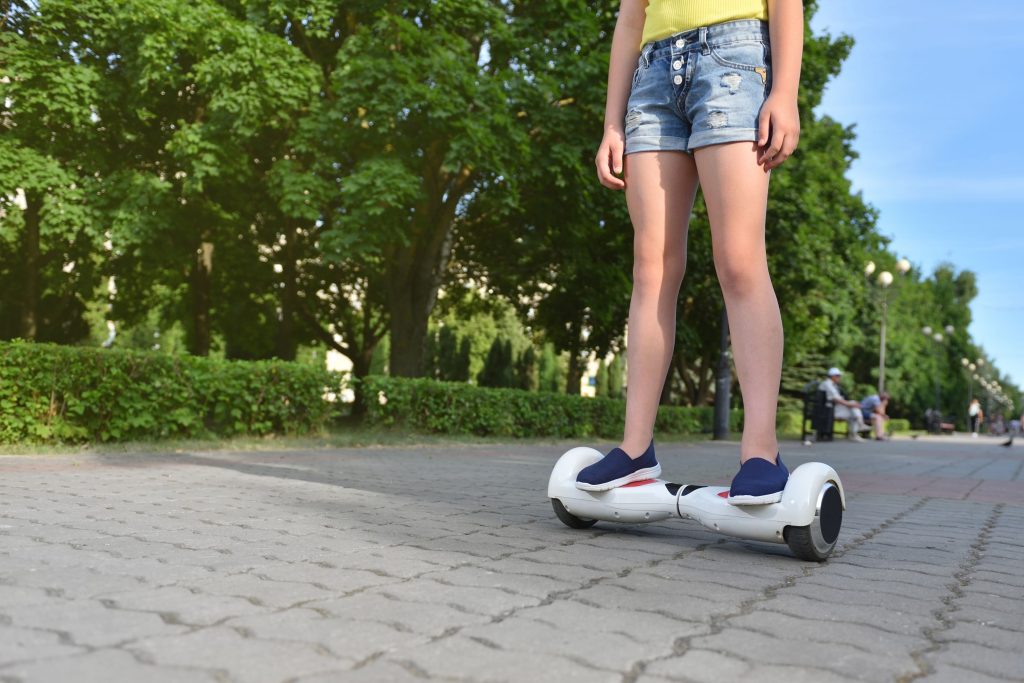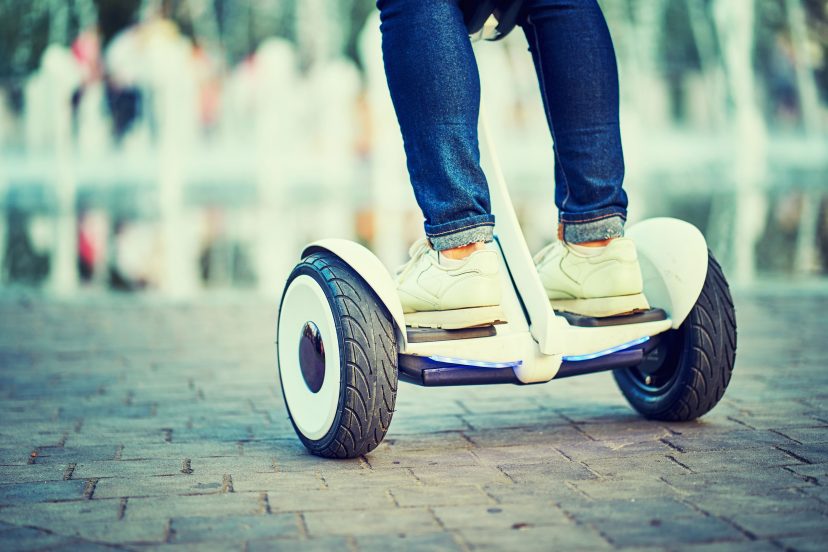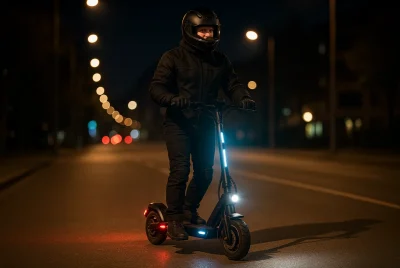How to Ride a Hoverboard
*We may earn a commission for purchases made using our links. Please see our disclosure to learn more.
Hey there, fellow thrill-seekers and electric skateboard enthusiasts! If you’re ready to take your ride to the next level, it’s time to dive into the exciting world of hoverboarding. Whether you’re an absolute beginner or someone looking to brush up on their skills, this comprehensive guide will teach you everything you need to know about riding a hoverboard safely and confidently.
Choosing the Right Hoverboard
Before you embark on your hoverboarding adventure, it’s essential to choose the right hoverboard and consider your skill level. Just like any other mode of transportation, hoverboards come in various models designed for different skill levels. If you’re a beginner, opt for a hoverboard with beginner-friendly features like stability and slower speed settings. Experienced riders may prefer more advanced models that offer higher speeds and agility.
Understanding Hoverboard Features
Hoverboards vary in terms of battery life, speed, and terrain compatibility. Be sure to research and choose one that suits your needs. Remember, safety should be your top priority.
When selecting a hoverboard, consider the following features:
- Battery Life: Longer battery life means more riding time on a single charge.
- Speed: Different models have varying top speeds. Choose one that matches your comfort level.
- Terrain Compatibility: Some hoverboards are better suited for off-road adventures, while others are designed for smooth city streets.
Safety Certification
Ensure that your chosen hoverboard is certified by safety standards organizations. Look for certifications like UL2272, which indicates that the hoverboard has undergone rigorous testing for safety and electrical performance. This certification ensures that your hoverboard’s battery won’t overheat or catch fire during use.
Safety First: Gear Up
Before you even step on a hoverboard, gearing up is non-negotiable. Here’s what you need:
Helmet – Your Most Important Accessory
A helmet is your best friend when it comes to hoverboarding safety. Protect your noggin! Even experienced riders should never neglect this crucial piece of gear. Look for helmets designed for multi-sport use with certifications such as CPSC or ASTM for added protection.
Wrist Guards and Knee Pads
In addition to a helmet, wrist guards and knee pads will safeguard you from potential falls and scrapes. Safety gear is not just for kids; it’s for riders of all ages. These protective accessories can help prevent injuries to your wrists and knees, which are common in hoverboard accidents.
Appropriate Footwear
Choose comfortable, closed-toe shoes with good traction. Avoid sandals or flip-flops, as they can affect your balance and grip on the hoverboard. High-top sneakers or athletic shoes work well for hoverboarding, providing support and grip to keep you steady.
Step by Step Guide on How to Ride a Hoverboard
Calibration and Balance
Calibrate your hoverboard according to the manufacturer’s instructions. Proper calibration ensures that the hoverboard responds accurately to your movements and maintains balance. Calibration typically involves placing the hoverboard on a level surface and following the steps outlined in the user manual.
Balancing on a hoverboard is akin to finding your center of gravity. Keep these tips in mind to achieve balance:
- Keep your knees slightly bent to absorb shocks and adjust to changes in terrain.
- Maintain a straight back and look forward to help with balance.
- Distribute your weight evenly between both feet.
- Practice balancing on your hoverboard before attempting to move.
Mounting and Dismounting
Before you start moving, you need to know how to get on and off your hoverboard safely.
Step-by-Step Guide
- Start with one foot on the hoverboard and the other on the ground.
- Activate the hoverboard and wait for the gyroscopes to level.
- Gradually shift your weight onto the hoverboard while keeping your balance.
- Place your other foot on the footpad.
Finding Your Balance Point
The key to hoverboarding is finding your balance point. Keep your knees slightly bent, your back straight, and your eyes forward. Practice balancing on your hoverboard before attempting to move.
Starting Off: Basic Riding

Learning to Move Forward
To move forward, simply lean your body slightly forward. The more you lean, the faster you’ll go. To stop, straighten up and shift your weight backward. Hoverboards use intuitive motion sensors that respond to your body movements.
Slowing Down and Stopping
To slow down or stop, lean backward gently. Remember, abrupt movements can throw you off balance, so be smooth and gradual with your actions. Hoverboards are designed to stop when you lean back.
Mastering Turning
Turning on a hoverboard is intuitive. To turn left, lean your body to the left, and to turn right, lean right. Practice turning in a controlled manner to avoid sudden spins. Turning requires a gentle shift of your weight, so start with small movements until you’re comfortable.
Riding Backward
Yes, you can ride your hoverboard backward! It’s all about shifting your weight in the opposite direction. Practice this move slowly and in a safe environment. Riding backward can be useful when you need to reverse direction quickly.
Hoverboards can handle small obstacles like cracks and bumps, but you’ll need some skill to do it smoothly. Approach obstacles at a slight angle and bend your knees to absorb shocks. The key is to maintain balance and control while crossing uneven terrain.
Tricks and Stunts
For the daredevils out there, hoverboards offer the potential for tricks and stunts. But remember, safety always comes first. Only attempt tricks once you’ve become a confident rider, and be sure to wear appropriate safety gear, including a helmet and pads.
Getting to Know Your Hoverboard
Parts and Components
Your hoverboard has various parts, including two wheels, footpads, a gyroscope, and sensors. Understanding these components will help you navigate and maintain your ride effectively.
- Two Wheels: Hoverboards typically have two large wheels that provide stability and movement.
- Footpads: These are where you place your feet. They contain sensors that detect your movements and balance.
- Gyroscope: The gyroscope helps maintain balance by adjusting the speed of each wheel.
- Sensors: Sensors in the footpads detect the pressure and tilt of your feet, allowing you to control the hoverboard’s movements.
Maintaining Your Hoverboard
To keep your hoverboard in top shape and ensure your safety, regular maintenance is essential.
Battery Care
The battery is the heart of your hoverboard, so taking care of it is crucial. Here are some tips:
- Charge your hoverboard with the provided charger, and avoid using third-party chargers.
- Don’t leave your hoverboard plugged in for extended periods. Overcharging can damage the battery.
- Store your hoverboard in a cool, dry place to prevent extreme temperature exposure, which can affect battery life.
Cleaning and Maintenance
Clean your hoverboard regularly, especially the wheels and footpads, which can accumulate dirt and debris. Check for loose screws and tighten them as needed. It’s a good practice to inspect your hoverboard before each ride to ensure it’s in proper working condition.
Troubleshooting Common Issues
If you encounter any problems with your hoverboard, consult the user manual or seek professional assistance. Don’t attempt repairs if you’re not experienced, as tinkering with the internal components can void your warranty and compromise safety.
Common issues may include:
- Uneven Riding: If your hoverboard leans to one side while riding, it might require calibration.
- Battery Problems: If your battery isn’t holding a charge or the hoverboard is turning off unexpectedly, contact the manufacturer for assistance.
- Wheel and Motor Issues: If you experience wheel or motor problems, seek professional repair services.
Safety Tips for Hoverboarding
Hoverboarding can be loads of fun, but it’s crucial to stay safe. Here are some safety tips:
Avoiding Hazards
Be mindful of your surroundings. Watch out for potholes, curbs, and uneven terrain. Keep away from busy streets and traffic, as hoverboards are designed for pedestrian-friendly environments.
Riding in Traffic
If you need to cross a road, dismount and walk your hoverboard across at a designated crosswalk or intersection. Never ride your hoverboard on roads with vehicles, as they are not designed for high-speed traffic.
Riding at Night
If you ride at night, make sure your hoverboard has adequate lighting, and wear reflective clothing to increase visibility. Many hoverboards come equipped with LED lights that enhance nighttime visibility.
Common Mistakes and How to Avoid Them
Even seasoned riders can make mistakes. Here are some common blunders and how to avoid them:
Overconfidence
Don’t let overconfidence lead to reckless riding. Always respect your limits and the capabilities of your hoverboard. Even if you’re experienced, remember that terrain and conditions can change quickly.
Not Paying Attention to Terrain
Ignoring the terrain can result in accidents. Always scan the path ahead and adjust your speed and technique accordingly. Riding on uneven or slippery surfaces can lead to loss of control.
Ignoring Battery Warnings
If your hoverboard gives you low battery warnings, heed them immediately. Ignoring these warnings can lead to unexpected shutdowns, potentially causing accidents or falls. Carry a charger with you if you plan to ride for an extended period.
Conclusion
Congratulations! You’ve reached the end of our comprehensive guide on how to ride a hoverboard. By now, you should have the knowledge and skills to enjoy this exhilarating mode of transportation safely. Remember always to prioritize safety, practice regularly, and have a blast exploring the world on your hoverboard!
Frequently Ask Questions (FAQs)
Q1: What age is suitable for riding a hoverboard?
Hoverboards are generally suitable for riders aged 8 and older. Younger riders should be supervised by adults.
Q2: Can I ride a hoverboard on sidewalks?
Rules regarding hoverboard use on sidewalks vary by location. Check local regulations, but generally, it’s best to ride in designated areas.
Q3: Are hoverboards safe for children?
Hoverboards can be safe for children when used responsibly and with proper safety gear. Always supervise young riders.
Q4: How do I prevent my hoverboard from catching fire?
Choose a reputable hoverboard with safety certifications, and follow the manufacturer’s charging instructions. Avoid overcharging or using incompatible chargers.
Q5: Is it legal to ride a hoverboard in my city?
Laws regarding hoverboard use differ by city and region. Check with your local authorities to understand the regulations in your area.




